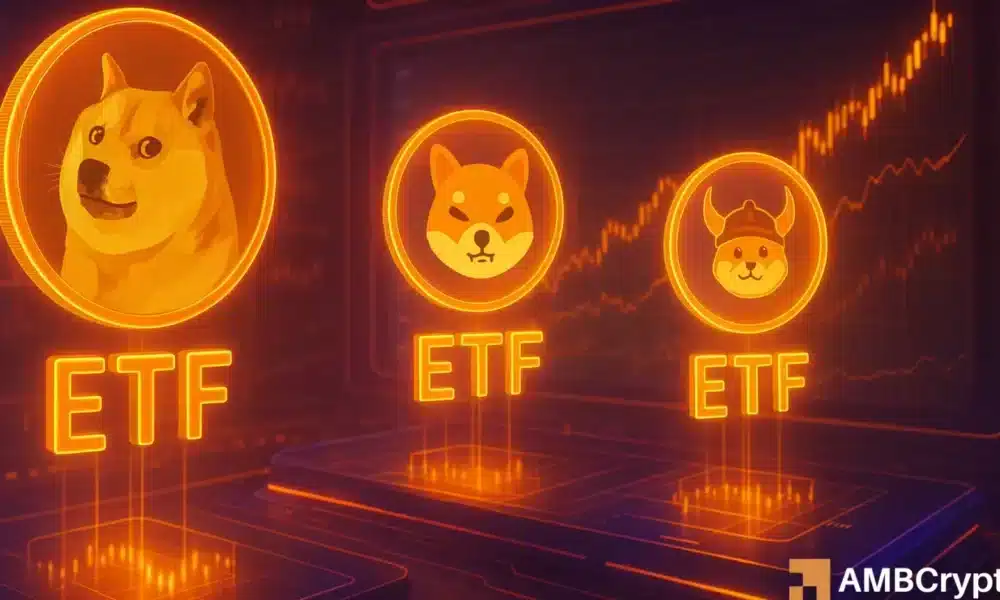The Rise of Memecoin ETFs: Increasing Demand and Anticipated Approvals by 2026
As the cryptocurrency market continues to evolve, the possibility of memecoin-focused ETFs (Exchange-Traded Funds) is becoming more realistic, with projections suggesting they could debut as early as 2026. This anticipated surge is largely driven by the rising interest in actively managed cryptocurrency products, with memecoins gaining traction as potential investment options. Analysts suggest that the launch of these specialized ETFs could cater to a growing demand for unique, niche financial products in the crypto space.
A Shift Towards Active Management
Industry experts are increasingly advocating for actively managed memecoin ETFs that strategically buy and sell digital assets based on their performance. An individual operating under the pseudonym Vladcoin proposed a specific approach—an ETF that actively trades memecoins to balance its portfolio by retaining promising tokens while offloading weaker ones. This active management strategy is anticipated to yield better results due to the erratic performance typically seen in memecoins. Bloomberg ETF analyst Eric Balchunas supports this idea, highlighting that such funds could thrive amid the volatility inherent in these digital assets.
The Market Landscape for Memecoin ETFs
Balchunas anticipates that by late 2025, a wave of actively managed cryptocurrency ETFs will flood the market, setting the groundwork for more niche offerings like memecoin-focused funds. He projects that a U.S.-listed ETF concentrated on memecoins could launch in early 2026, reflecting the market’s growing interest. As investors increasingly seek alternative investment vehicles, the landscape for cryptocurrencies, including memecoins, is poised to dramatically change. The rise of these ETFs aligns well with shifting investor preferences toward more tailored financial products.
Regulatory Hurdles and Sector Frustrations
Despite the growing enthusiasm surrounding niche ETFs, the progress of memecoin ETFs is stymied by regulatory challenges. The Securities and Exchange Commission (SEC) has delayed decisions on various ETF proposals, including those for Ripple (XRP), Solana (SOL), Litecoin (LTC), and Dogecoin (DOGE). This stagnation has left many issuers frustrated, as they anticipate regulatory clarity to advance their proposals. ETF providers such as VanEck and 21Shares have formally petitioned the SEC to reinstate a “first-to-file” review model to expedite the approval process, but until these regulatory hurdles are addressed, the future of memecoin ETFs remains uncertain.
Innovative Approaches to ETF Structure
To navigate the regulatory landscape more effectively, analysts suggest that these memecoin ETFs may not hold memecoins directly. Instead, they might gain exposure through established ETFs registered under the 1940 or 1933 Acts that include memecoin holdings. This innovative strategy would allow fund managers the flexibility to create more adaptable portfolios while remaining compliant with existing regulations. Such a structure could significantly increase the feasibility of these funds for mainstream investors, making them more attractive options in an evolving market.
The Future of Memecoin and Crypto ETFs
As the interest in altcoin ETFs continues to grow, memecoins are positioned to play a role in diversifying investment portfolios. The expectation of regulatory changes combined with advancements in ETF structures indicates a promising future for the market. Once the SEC resolves its backlog of proposals and offers clearer guidance, the stage may be set for the proliferation of both memecoin and broader cryptocurrency ETFs. The combination of active management strategies with innovative ETF structures may redefine how investors engage with these nascent digital assets.
In conclusion, the anticipated emergence of memecoin ETFs by 2026 is reflective of a shifting landscape within the cryptocurrency space. Increased demand for actively managed investment products, ongoing regulatory developments, and innovative ETF structures indicate a harmonious convergence of factors that could revolutionize the way investors access and invest in memecoins and other cryptocurrencies. While challenges remain, the potential for these niche financial products to engage with a broader audience is undeniable.


